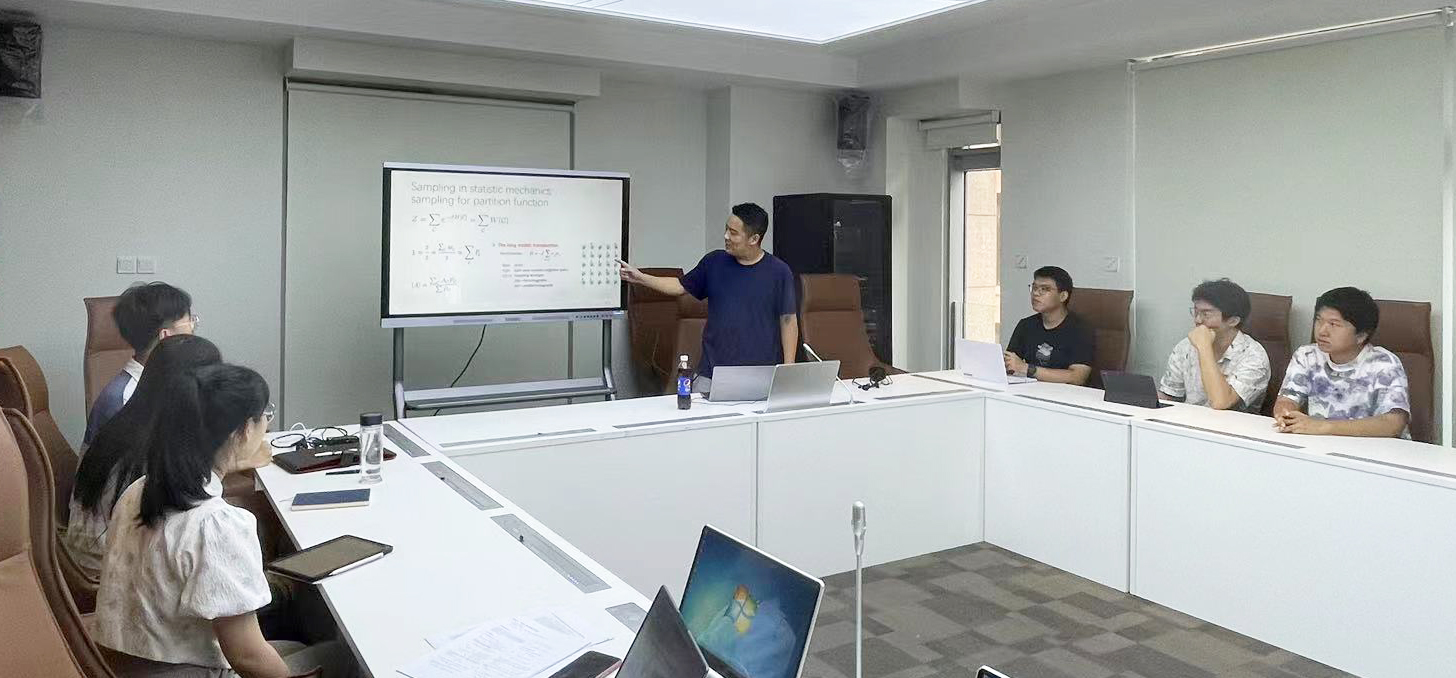




Search websites, locations, and people

Uncovering the Mysteries of Quantum Many-Body Physics: Q&A with Prof. Zheng Yan
Shirley Ji Wang
14, 2023
Email: sangeet@westlake.edu.cn
Phone: +86-(0)571-88112035
Office of the Dean, School of Science
Dr. Zheng Yan is one of the youngest and newest faculty members in the Department of Physics at Westlake University, but that’s not all that defines him. This 33-year-old Principal Investigator is a promising early-career physicist in the field of quantum many-body physics. So far, he has published over 30 theoretical and numerical studies, many of which have appeared in the top academic journals. His research into the interconnections of particles has enabled researchers to gain a new understanding of the quantum world and to apply that knowledge to exploring the possibility of cutting-edge quantum technologies.
In this wide-ranging Q&A, Dr. Yan talks about his Westlake experience as assistant professor, discusses his research, and why he thinks Westlake is a great fit for researchers looking to make a difference in their field.
Q1: You joined Westlake University this year. How has your experience been so far?
A: I am astounded by the exceptional environmental conditions, talented individuals, and abundant research resources available here! It appears that I can dedicate myself to conducting pure research with minimal concerns — even my family has been meticulously taken care of by the university.
Q2: As a faculty member in the Physics Department, what does your typical day look like?
A: Throughout the majority of each day, I dedicate my time to conducting research in my office, which encompasses activities such as reviewing scholarly articles, programming, formulating inquiries, and engaging in discussions with both my students and collaborators. Additionally, I regularly join my students for lunch and dinner as a means to foster deeper connections and gain further insights into their perspectives. The boundary between work and life is not very clear for me.
(Prof. Yan with his students posing for a group picture after a discussion session)
Q3: You have an impressive track record of publishing over 30 research papers, with the majority of them featured in the world’s top journals. What motivates you as a researcher?
A: To be honest, my primary source of motivation stems from my spouse. Despite harboring a profound interest in physics and deriving immense satisfaction from engaging in research endeavors, I had initially intended to pursue a career as a civil servant upon obtaining my Ph.D. However, it is ultimately thanks to my wife’s unwavering support and encouragement that I have persevered with scientific exploration. I am also deeply indebted to my parents for their invaluable assistance in caring for both my child and wife throughout my postdoctoral tenure.
Q4: Your research area involves theoretical and numerical studies of quantum many-body physics. Could you tell us more about it and its broader significance?
A: My main research area is theoretical and numerical studies of quantum many-body physics, as well as related quantum simulation/computing and quantum materials cross-disciplinary research. I am well-versed in developing new numerical methods to extend the availability of many-body calculations. The proudest work is the sweeping cluster Monte Carlo developed by me which solved the long-standing problem for the calculation of locally constrained models and has been included in a textbook as a single section.
The significance of quantum many-body physics lies in its direct relevance to future advancements, such as novel quantum materials, quantum computers, and quantum memory. The fundamental essence of this field can be summarized by the phrase ‘more is different’, as it seeks to uncover emergent phenomena resulting from particle interactions. This concept bears a resemblance to sociology, where languages, cities, and cultures are developed collectively by mass groups rather than individuals. Consequently, even with a comprehensive understanding of an individual’s behavior, the collective effects cannot be fully explained. Similarly, in the realm of quantum many-body physics, studying single particles alone is insufficient; understanding the interconnections between particles is equally crucial.
Q5: Beyond research, educating the next generation of scientists is a major responsibility of a Westlake faculty member. What approach do you take in nurturing young scientists?
A: “Que sera, sera~ Whatever will be, will be~” The song imparts to me the importance of adhering to natural laws. However, this does not imply that I relinquish my responsibility to train my students; rather, I provide them with unwavering support while refraining from imposing rigid expectations upon them. I strongly deem that the role a teacher should play is scaffolding. In fact, it is widely acknowledged that most renowned scientists have primarily developed their own talents, work ethic, and even luck through self-directed efforts, instead of blindly following their supervisors’ every move. I would commit myself to facilitating my students to progress, yet without constraining their potential.

(Prof. Yan during a recent lecture)
Q6: For many researchers and students actively seeking research opportunities, in your opinion, what makes Westlake University a compelling choice for their academic journey?
A: The academic freedom and research environment at this institution are unparalleled worldwide. The interpersonal dynamics here are characterized by simplicity and harmony. The students enrolled here represent the cream of the crop in China, while a multitude of distinguished scientists contribute their expertise to China. Above all, it is from the gorgeous campus that dreams of revitalizing science and education take flight.
RELATED




















